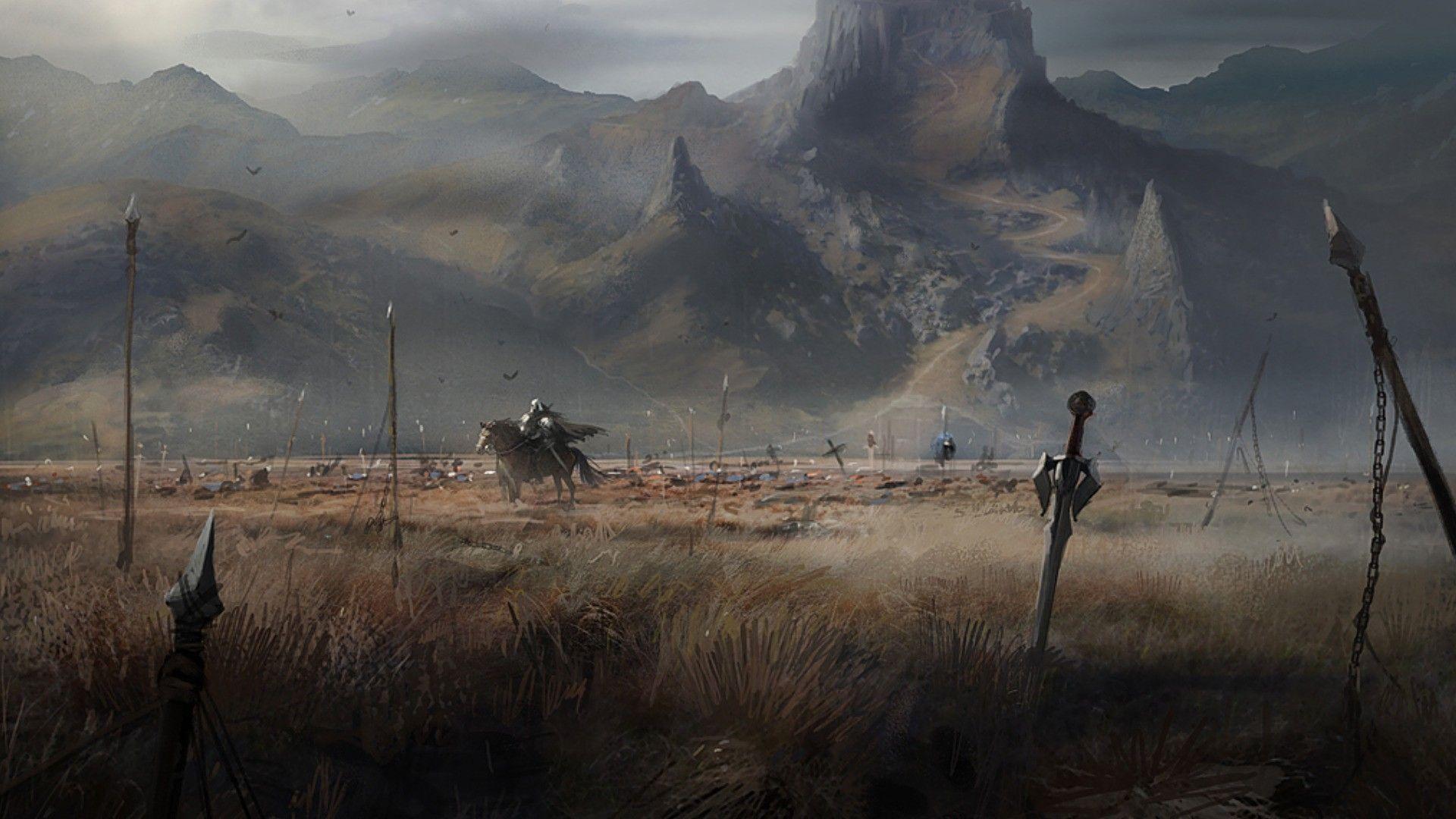

#Medieval battlefields wallpapers full
Pillers and robbers were come into the field, to pill and to rob many a full noble knight of brooches, and beads, of many a good ring, and of many a rich jewel and who that were not dead all out, there they slew them for their harness and their riches. He sends Sir Lucan back to see what is going on. Once he is gone, he hears grievous cries coming from the battlefield. In Malory’s reality, bodies left on the battlefield were robbed.Īfter the final battle of King Arthur’s reign, a mortally wounded King Arthur is carried to a nearby chapel. He would therefore have seen many of the brutal realities of war. Malory himself was a knight who saw many battles during the War of the Roses (if he is who we think he is). He does so, in part, to emphasize the end of the glorious reign of King Arthur and the needless death and destruction that came about as the kingdom fell.

After the final battle of Le Morte D’Arthur Malory presents an image of a field covered in corpses. Malory himself gives us one image of the less than glorious fate of some battlefield bodies. So, we don’t have a whole lot of information about what happened to all those corpses.īut we do have some. Focusing on the leftover carnage and decaying bodies would not further glorify the knight and would not be popular reading material, especially in the very idealized genre that is romance. They have served their role of glorifying the heroic knight and nothing more is said of them. They usually don’t even get mentioned at all.Īfter an insignificant knight or an enemy combatant is killed in battle they pretty much fall out of the narrative. The everyday participants in a battle, however, didn’t get these elaborate funerals. These two funerals give you a sense of the respect afforded to wealthy and influential corpses. You can read the full thing in Middle English here. Finally, the mourners build a marble monument around him and conduct an elaborate funeral service. After this, a sweet smell comes from his corpse and one hundred knights try to move the body but can’t because it is too heavy – both of these miraculous occurrences are markers of the knight’s saintliness. First, one thousand and seven angels (yes, it is that specific) carry his soul to heaven, then his lady weeps over his body. When the hero of the romance Guy of Warwick dies, he gets an even more extravagant funeral. When Gawain dies in Malory’s Le Morte D’Arthur, for example, King Arthur cries over him and takes him into a chapel in Dover Castle where he lies in state so that everyone can look at the impressive wound in his skull. If the knight has a very high name recognition (like Lancelot or Gawain), or, if they are the hero of their text, they will often get an elaborate funeral sequence. Unless, that is, the corpse belongs to the mighty hero. While body counts glorify the knights in these texts, the authors don’t typically pay a whole lot of attention to what happens to these bodies after the battle is done. There is a Gutenberg version of Malory’s text available freely online here if you want to read over some of these massive battles. His most effective knights too, like Lancelot and Gawain, are frequently praised because they can kill many people in battle. King Arthur in Sir Thomas Malory’s Le Morte D’Arthur, for example, is celebrated for slaying many people in his first battle. This varies, of course, according to the text and the genre, but usually, and especially in the Middle English tradition, heroes are celebrated for their kills. That person (the mighty hero) is usually responsible for a massive body count.


 0 kommentar(er)
0 kommentar(er)
